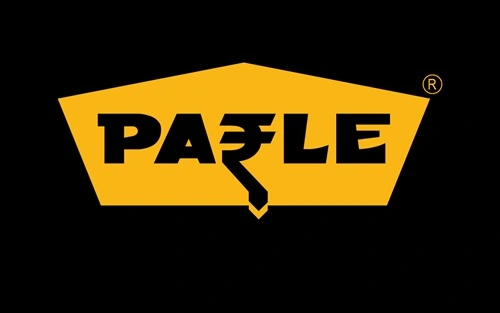Parle Products, one of India’s oldest and most beloved FMCG companies, is synonymous with its flagship brand, Parle-G, the iconic glucose biscuit that has been a staple for millions of Indian households. Established in 1929, Parle has a strong legacy in the Indian market and an extensive portfolio of biscuits, confectioneries, and snacks. Parle-G has become a household name, known for its affordability, availability, and high-quality products. The company’s impressive reach and deep understanding of the Indian consumer have enabled it to capture a significant market share in the highly competitive FMCG sector. However, with the industry continuously evolving and new players entering the market, Parle faces both challenges and opportunities. This SWOT (Strengths, Weaknesses, Opportunities, Threats) analysis examines Parle’s current position and future outlook in the dynamic FMCG landscape.

Strengths
1. Strong Brand Equity and Trust:
Parle-G is one of the most trusted and recognized brands in India, with over 90 years of history. Its iconic packaging, value-for-money pricing, and quality have made it a staple in Indian households. Parle’s brand equity and reputation for quality have helped it become a leading player in the biscuit segment, capturing the trust of generations of consumers. The nostalgia and brand loyalty associated with Parle-G give it an enduring advantage over newer competitors.
2. Extensive Distribution Network and Reach:
Parle has one of the most extensive distribution networks in India, with products available in over 6 million retail outlets across urban and rural areas. This reach enables Parle to penetrate the deepest corners of India, making it accessible to diverse demographics. The company’s wide distribution network has been instrumental in making Parle-G one of the highest-selling biscuits in the world, as it reaches consumers across urban and rural markets.
3. Affordable Pricing and Value Proposition:
Parle-G’s affordability is one of its strongest selling points, allowing it to cater to a broad consumer base, including price-sensitive customers. The brand’s ability to maintain affordable pricing without compromising on quality has endeared it to a wide range of consumers, from children to the elderly. Parle’s value proposition of providing affordable, quality products is especially appealing in rural and semi-urban areas where affordability is a key factor in purchasing decisions.
4. Diverse Product Portfolio:
While Parle-G remains its flagship product, Parle Products offers a wide range of biscuits (such as Parle Monaco, Hide & Seek, and KrackJack), confectionery, snacks, and rusk. This diversified portfolio allows Parle to cater to different consumer tastes and preferences and expand its reach beyond glucose biscuits. By offering products in both premium and affordable categories, Parle has established a well-rounded product lineup that appeals to various customer segments.
Weaknesses
1. Overdependence on Parle-G:
Parle’s brand identity is strongly tied to Parle-G, with the biscuit contributing significantly to the company’s revenue. This overdependence on a single product line makes Parle vulnerable to any fluctuations in demand for glucose biscuits. Although Parle has a diversified portfolio, its other brands have not achieved the same level of popularity or brand recognition as Parle-G. This reliance on a single product for revenue generation could be risky if consumer preferences shift.
2. Limited Presence in the Premium Segment:
Parle’s core strength lies in the mass-market and budget segments, with limited presence in the premium and health-conscious product categories, where demand is rapidly growing. Consumers, particularly in urban areas, are increasingly gravitating toward premium, organic, and healthy products. Parle’s limited focus on this high-margin segment restricts its ability to capture a growing customer base willing to pay a premium for healthier or unique products.
3. Slower Innovation Compared to Competitors:
While Parle is known for its traditional product lineup, it has been slower to innovate compared to competitors like Britannia and ITC, who frequently introduce new flavors, health-oriented products, and premium options. Parle’s slower pace of innovation could hinder its appeal among younger, experimental consumers who seek new flavors and product varieties. Additionally, its focus on established products could make it less adaptable to changing market trends and consumer preferences.
d. Limited Global Presence:
Although Parle is a household name in India, its international footprint remains limited. This restricts Parle’s ability to diversify its revenue sources and capture global market share. Despite having a presence in some international markets, Parle lacks the scale and brand recognition that global FMCG giants enjoy. Expanding its international reach could provide Parle with new growth opportunities and reduce dependency on the Indian market.
Opportunities
1. Growing Demand for Healthier and Premium Products:
Indian consumers, particularly in urban areas, are increasingly focusing on health and wellness, seeking out products with natural ingredients, low sugar, and no artificial additives. Parle has the opportunity to expand into this high-growth segment by introducing healthier versions of its popular biscuits or launching a new range of premium and health-conscious products. Introducing organic, whole grain, or fortified options could help Parle appeal to health-conscious consumers.
2. Expansion into Rural Markets and Smaller Towns:
India’s rural and semi-urban markets present substantial growth opportunities for Parle. With its established distribution network and affordable pricing, Parle is well-positioned to capture demand in these regions. Expanding product lines specifically designed for rural markets, where brand loyalty is high, could further strengthen Parle’s presence and help it tap into the growing purchasing power in these areas. Rural India is becoming increasingly aspirational, and by tailoring products to local tastes and preferences, Parle can expand its customer base.
3. Strengthening Digital Marketing and E-Commerce Presence:
With the rise of digital media and e-commerce platforms, Parle can leverage online channels to engage with younger audiences and promote its products. E-commerce and online grocery platforms provide Parle with additional sales channels, especially in urban areas where digital adoption is high. By investing in digital marketing, influencer partnerships, and social media campaigns, Parle can increase brand visibility, attract younger consumers, and boost online sales.
4. International Expansion and Strategic Partnerships:
Expanding into international markets, particularly in South Asia, Africa, and the Middle East, could open up new revenue streams for Parle. These regions have a high proportion of Indian diaspora and consumers who are familiar with Indian brands. Additionally, forming strategic partnerships with local distributors or foreign FMCG companies could help Parle navigate the challenges of international expansion and enhance its global presence.
Threats
1. Intense Competition from Domestic and International Brands:
The Indian FMCG and biscuit industry is highly competitive, with major players like Britannia, ITC, and Nestlé vying for market share. International brands and newer local brands are also entering the market, introducing innovative products and targeting health-conscious consumers. This intense competition requires Parle to constantly innovate and invest in marketing to maintain its market share, especially as competitors introduce health-focused and premium offerings that appeal to urban consumers.
2. Changing Consumer Preferences and Health Trends:
As health consciousness grows among Indian consumers, there is a rising demand for low-calorie, sugar-free, and organic products. Traditional glucose biscuits may not align with the preferences of health-focused consumers, posing a challenge for Parle-G’s continued popularity. If Parle fails to adapt to these changing trends, it risks losing market share to brands that offer healthier alternatives, particularly in urban and metro areas.
3. Price Sensitivity and Rising Raw Material Costs:
Parle’s success is largely based on its affordable pricing, making it vulnerable to fluctuations in the cost of raw materials such as wheat, sugar, and packaging materials. Rising raw material costs can impact Parle’s profitability and may force it to increase prices, which could affect demand among its price-sensitive consumer base. Managing input costs and maintaining affordable pricing will be essential for Parle to remain competitive in the budget segment.
4. Regulatory and Compliance Risks:
The FMCG sector in India is subject to stringent regulations related to product quality, food safety, labeling, and advertising standards. Any regulatory changes, such as stricter guidelines on sugar content or labeling requirements, could impact Parle’s operations and product formulations. Compliance with evolving regulations is crucial for Parle to avoid penalties, safeguard its reputation, and continue meeting consumer expectations.
Future Outlook
Parle Products has a positive outlook in India’s growing FMCG market, driven by its strong brand presence, extensive distribution network, and focus on affordable products. As one of the most recognized brands in India, Parle is well-positioned to capture demand in both urban and rural markets. With the Indian FMCG market projected to grow, Parle’s focus on value-driven products and deep market penetration offers significant growth potential.
To capitalize on emerging trends, Parle should consider expanding into the health-conscious segment by introducing products with natural ingredients, low sugar, and functional benefits. With growing demand for premium and healthy options, Parle can enhance its portfolio to include products that cater to health-focused consumers without compromising affordability. Additionally, focusing on eco-friendly packaging and sustainable sourcing practices will help Parle align with global sustainability trends and attract environmentally conscious customers.
Strengthening its digital marketing and e-commerce presence is also crucial as online shopping gains traction in India. Parle can leverage digital channels to reach urban millennials and Gen Z consumers, enhancing brand engagement and boosting online sales. Expanding its presence on e-commerce platforms and developing direct-to-consumer channels can also help Parle reach a wider audience and tap into urban demand.
Parle should consider strategic international expansion to diversify its revenue sources and reduce reliance on the Indian market. Targeting regions with a high Indian diaspora, such as the Middle East and Africa, can provide Parle with new growth opportunities and increase its global footprint.
However, Parle must address challenges posed by intense competition, changing consumer preferences, and rising costs. Focusing on product innovation, quality consistency, and cost management will be essential to maintaining its competitive edge.
In conclusion, Parle’s strengths in brand trust, affordability, and distribution network position it well to capture growth in India’s FMCG market. By embracing innovation, expanding digital engagement, and addressing health-conscious trends, Parle can continue its legacy as India’s leading FMCG brand. With a balanced approach to product expansion and cost management, Parle is well-prepared to navigate challenges and secure long-term success.

